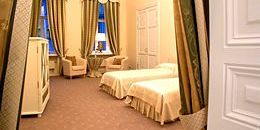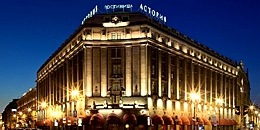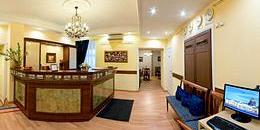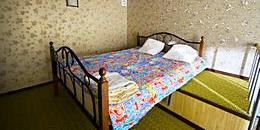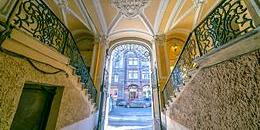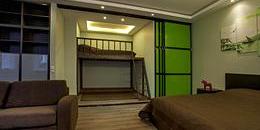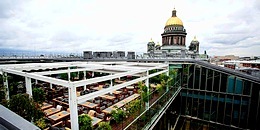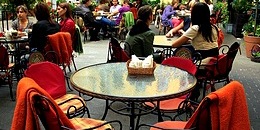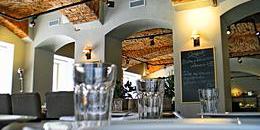Bolshaya Morskaya Ulitsa (Grand Sea Street)
Bolshaya Morskaya Ulitsa is one of the main streets running perpendicular to Nevsky Prospekt, connecting Palace Square with St. Isaac's Cathedral, which should make it part of every visitor's itinerary. It also boasts a wealth of interesting architecture from all three centuries of St. Petersburg's existence, including several particularly fine examples of early 20th century commercial buildings.
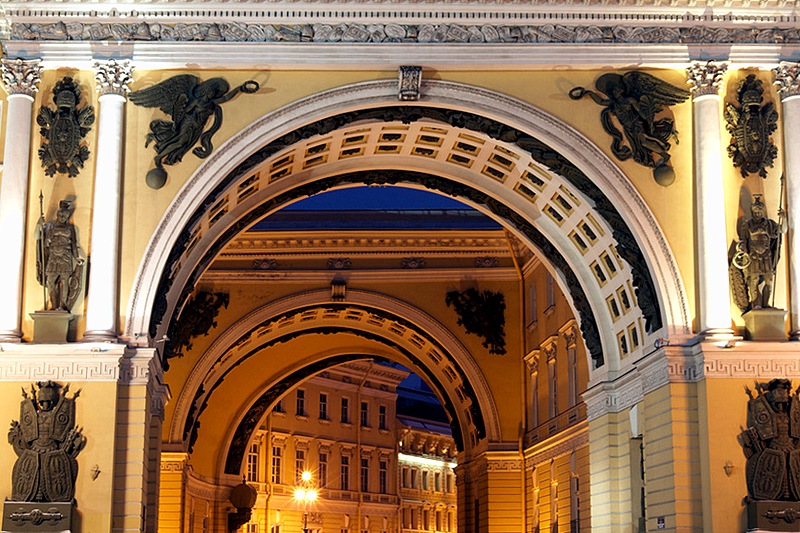
Two Morskaya Ulitsas - Bolshaya and Malaya (Large and Small) - have existed since the founding of St. Petersburg in 1703. Sailors and workers from the Admiralty originally lived here, hence the streets' names, and this remained the situation until the middle of the 19th century, when Bolshaya Morskaya became home to jewelers attracted to its proximity to Nevsky Prospekt and the largest Gostiny Dvor (indoor market) in Russia. Many stores rapidly opened where you could buy jewelry and other luxury items. Thus, the residents of St. Petersburg gave the street the informal name Brilliantovaya (Diamond).
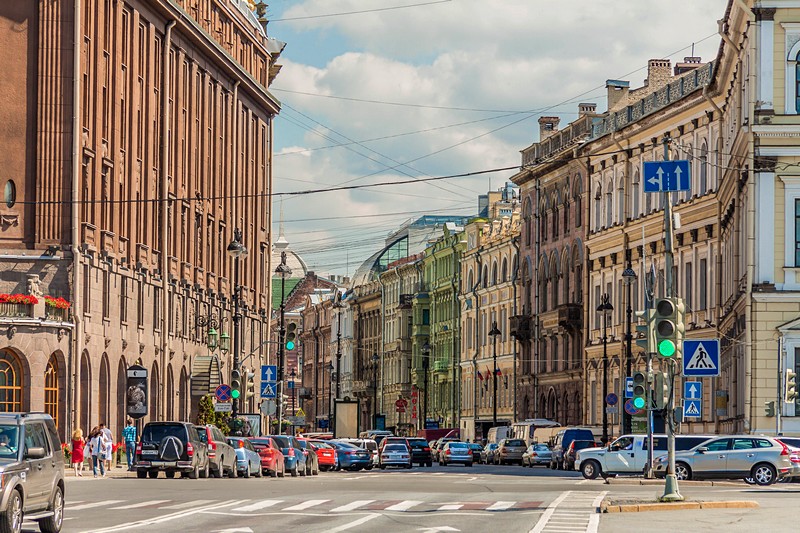
In the early 20th century, banks and trading houses were built next to the jewelry stores, and the area turned into a business center. The street gained fame for several technical innovations that were tested here before being implemented throughout the city. In 1835, for example, the first gas street lamps were installed, and they were replaced with electric ones in 1884. The first electric clock was installed on the facade of house No. 2 at the request of the great 19th century polymath Dmitry Mendeleev.
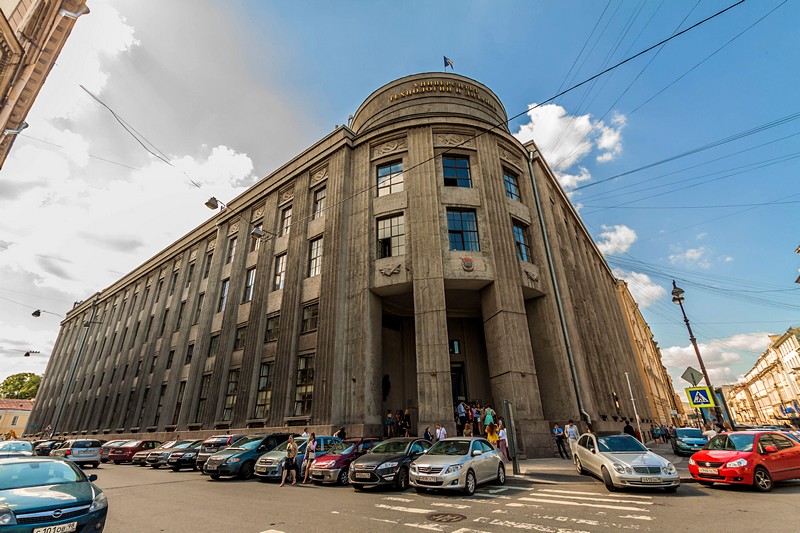
Bolshaya Morskaya Ulitsa could not have a more stunning beginning, running as it does from the grand central arch of the General Staff Building, which leads onto Palace Square directly opposite the Winter Palace. This majestic entrance onto St. Petersburg's main public space is still regularly used in city celebrations and military parades.
Not far from the archway, the Azov-Don Bank (Nos. 3-5) is Bolshaya Morskaya Ulitsa's first notable building. Designed by the talented Swedish-Russian architect Fyodor Lidval, its imposing gray granite facades feature a massive four-columned portico and elegant reliefs. It later became the Intercity Telephone Station, and its beautifully decorated operations hall is now home to a gastro-pub and microbrewery.
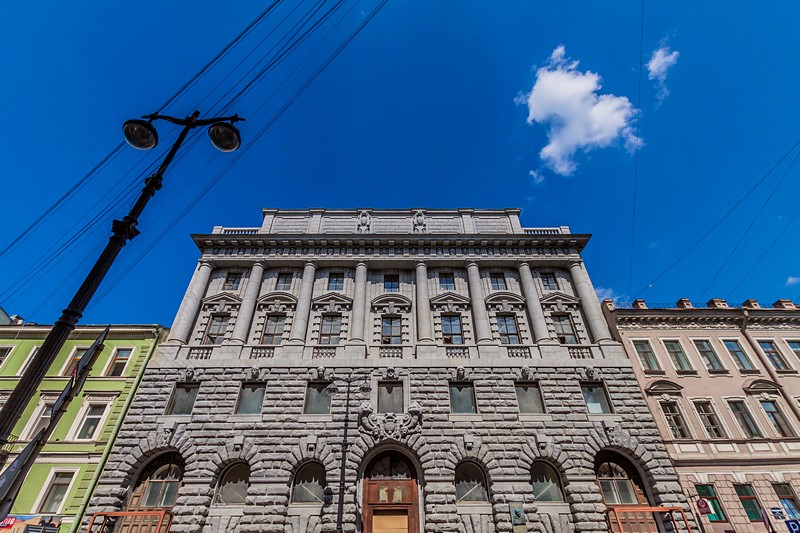
On the south side of Nevsky Prospekt, Bolshaya Morskaya Ulitsa was cut off in 1755 by Empress Elizaveta Petrovna's first Winter Palace, a grand wooden building by Francesco Bartolomeo Rastrelli designed to serve as a temporary imperial residence while the architect worked on the stone palace next to the Neva River. Once the real Winter Palace was completed, the wooden building was demolished and the plot on the west side stood empty for several decades. Some sources say it became the site of a puddle so large that local children could paddle makeshift boats around it. Eventually, the young architect Vikentiy Beretti built the simple but elegant Chaplin House on the site (1804-1806).
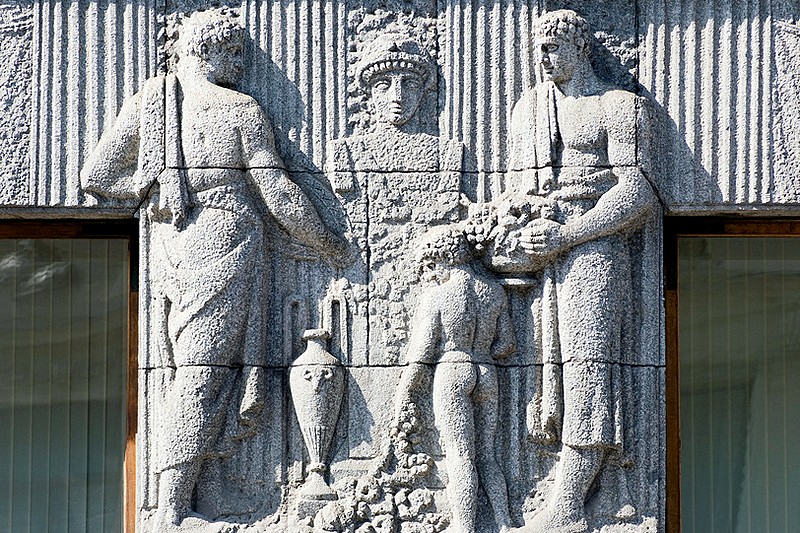
On the eastern side, the pink and white Chicherin House, built 1768-1771 by an unknown architect, was one of the grandest residences on Nevsky Prospekt and has since enjoyed a colorful history. In the 1810s and 1820s, the ground floor of the building was home to the fashionable Talon Restaurant, and a mouth-watering description of the French fare on offer there can be found in Pushkin's Evgeniy Onegin. In the first years after the October Revolution, the building was used on Maxim Gorky's initiative as a sort of club and hostel for young writers, where residents included Osip Mandelshtam and Nikolay Gumilev, and H.G. Wells was among the notable visitors. It then became the Barrikada Cinema, one of the most famous movie houses in Leningrad. The building underwent fundamental reconstruction in 2007 to become the five-star Taleon Imperial Hotel, although some of its historic interiors have been preserved.
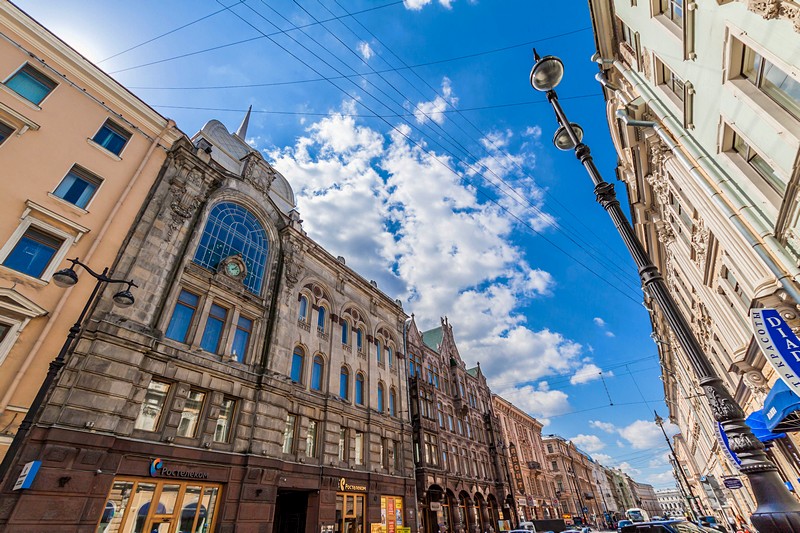
Of a similar style and vintage to the Azov-Don Bank, the Russian Trade and Industrial Bank (No. 15), built by Marian Peretyatkovich 1912-1914, employs the same rough gray granite on its Renaissance Revival facades, and has an even more finely decorated operations hall. A third bank building, for the Russian Foreign Trade Bank, was designed by Fyodor Lidval and Leonty Benois at No. 18, but not completed before the October Revolution. Finished in a more severe style 1929-1930, the building became the Textile Institute, now part of the University of Technology and Design.
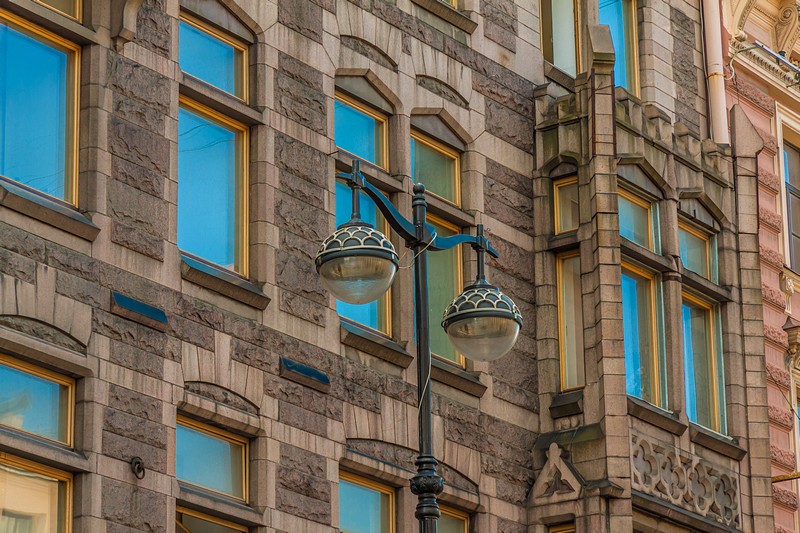
Another fine example of early 20th century architecture can be found at No. 22, where in 1905 architect Karl Valdi designed beautiful Art Nouveau facades for the Central Telephone Station, adapting what had previously been the house of St. Petersburg's Chief of Police. The building next door (No. 24) was bought in 1898 by Russia's most famous jeweler, Peter Carl Faberge. Reconstructed by Karl Schmidt, a distant cousin of Faberge, also in Art Nouveau style, it housed not only the world famous jeweler's store, but also his 15-room family apartments and the workshops where teams of craftsmen designed and assembled Faberge's renowned easter eggs for the Imperial family and other exceptionally wealthy customers.
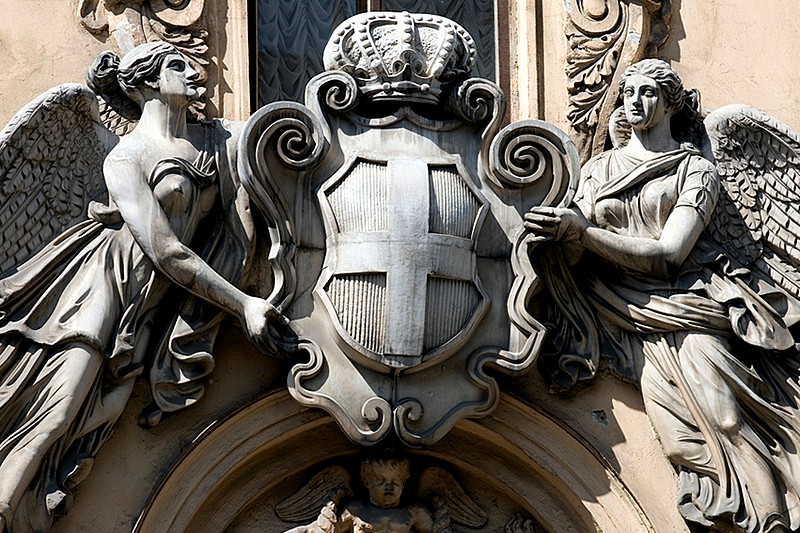
The block between Gorokhovaya Ulitsa and St. Isaac's Square includes a few former mansions of the pre-Revolutionary aristocracy. At No. 29, the ornate baroque facades of the mansion of Countess Maria Razumovskaya are doubly deceptive - the design of the building belongs, like the Beloselsky-Belozersky Palace on Nevsky Prospekt, to the peculiarly faithful baroque revival of the 1840s, and the whole building was reconstructed from the ground up in the 1970s. The building next door, although unremarkable architecturally, belonged to the prominent Lobanov-Rostovsky family for much of the 19th century before becoming the Imperial Yacht Club.
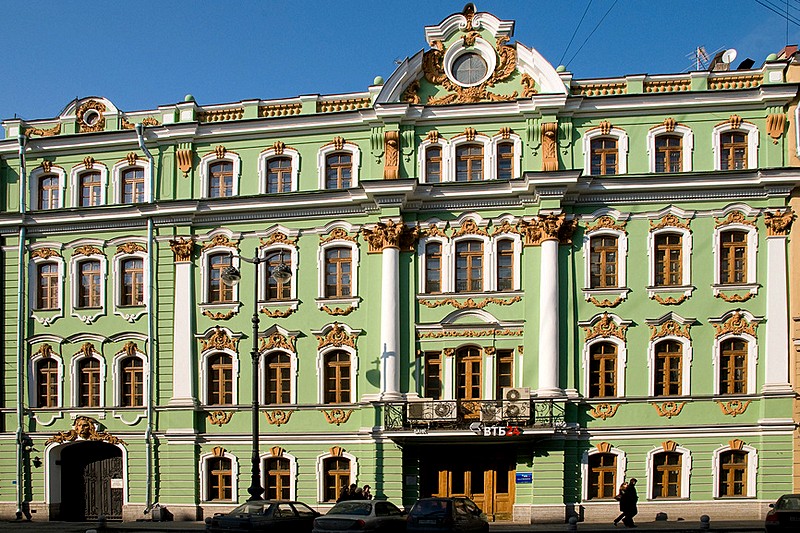
Returning to the 20th century and to one of the jewels of the street, No. 35 is the Apartment Building of the Russia Insurance Society. A masterpiece of Northern Moderne, its rich Romanesque decorations include majolica friezes on its granite facades by the great painter Nicholas Roerich, and inside a wealth of further friezes, stained glass windows and ceramic stoves, some of which can be seen when visiting Rosfoto, St. Petersburg's main museum of photography, which occupies a large part of the building.
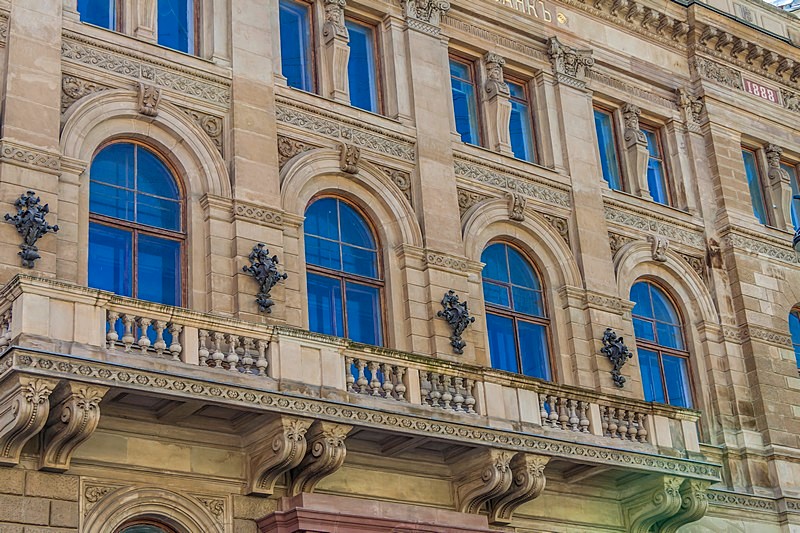
Opposite at No. 38, another richly decorated building houses the St. Petersburg Union of Artists. The building was presented by Emperor Alexander I to the Society for the Cultivation of the Arts in 1871. The Society was a mixture between an art school and an exhibition space, designed to promote Russian national art. The building was reconstructed twice for the Society, most significantly by Ieronim Kitner, 1890-1893. After the October Revolution, the building passed straight to the newly founded Union of Artists, and thus its fine interiors, which include stained glass windows and ornately carved wooden fittings, have been very well preserved. The Union continues to mount exhibitions of work by local artists.
Next door at No. 40, a small but perfectly formed Renaissance Revival building designed by cousins Leontiy and Yuliy Benois in 1900 for the First Russian Insurance Society. It later housed the St. Petersburg College of Architecture and Construction. Less ornate, but also with elements of renaissance decoration, the large building at No. 42 was built by Nikolay Efimov 1844-1853 to house the Ministry of State Properties of the Russian Empire.
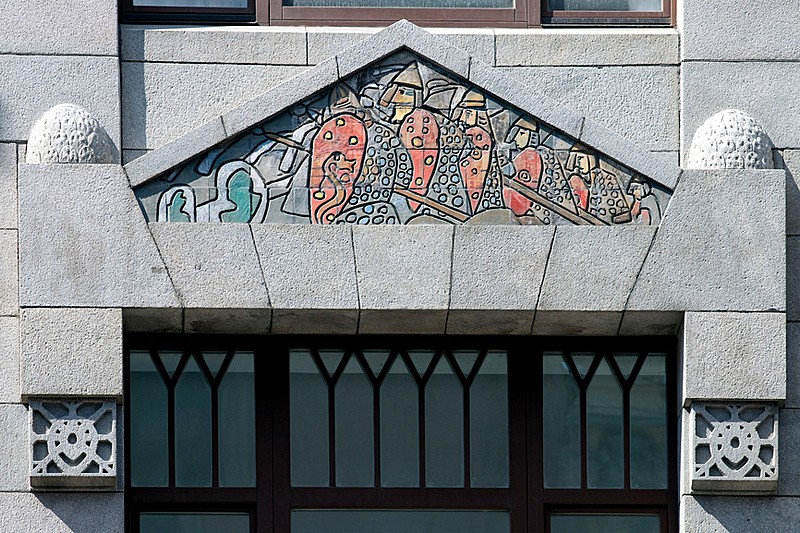
At this point, Bolshaya Morskaya Ulitsa crosses St. Isaac's Square, passing the Astoria Hotel (No. 39), another project designed by Fyodor Lidval. Although not the most beautiful building on the street, the Astoria, opened in 1912, has ever since had a reputation for luxury rivalled only by the Grand Hotel Europe. On the opposite side of the square, Bolshaya Morskaya runs past Paul Behrens's German Embassy, one of very few buildings in St. Petersburg to be designed by an internationally famous architect, although its muscular, industrial neoclassicism was considered scandalous when it was unveiled in 1913.
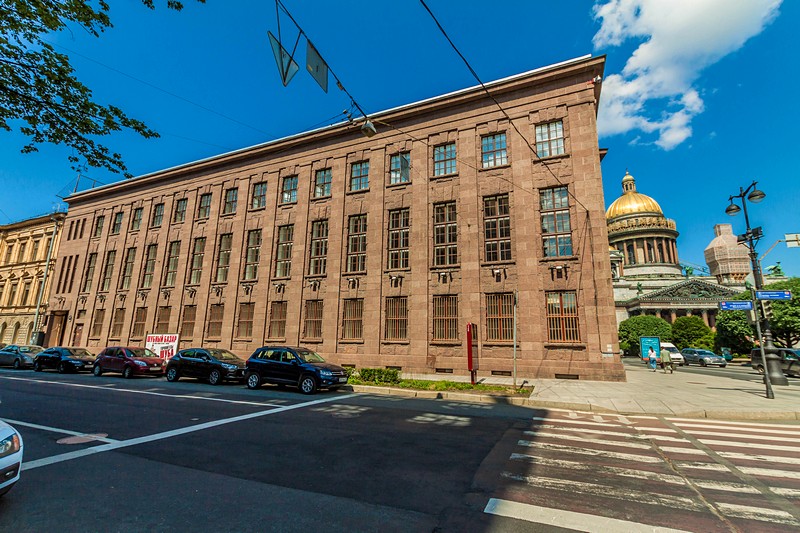
Opposite, the Demidov Mansion (No. 43) was reconstructed 1835-1840 by Auguste de Montferrand, architect of St. Isaac's Cathedral. The building is of interest not only for its rather comically posed atlantes, but also because the richly decorated interiors included a Malachite Room several years before the idea was adopted in the Winter Palace. Unfortunately, the malachite decorations were removed in 1925, when the building was occupied by the Italian Embassy. The better-preserved house next door (No. 45) dates back to the 1740s, and was also reconstructed by Montferrand, who sold it to the Demidov family in 1836. It later belonged to Countess Vera Gagarina, who employed Maximilian Messmacher to design interiors for some of the rooms. The building is now the House of Composers, and some of Messmacher's and Montferrand's original interiors can still be seen when visiting concerts there.
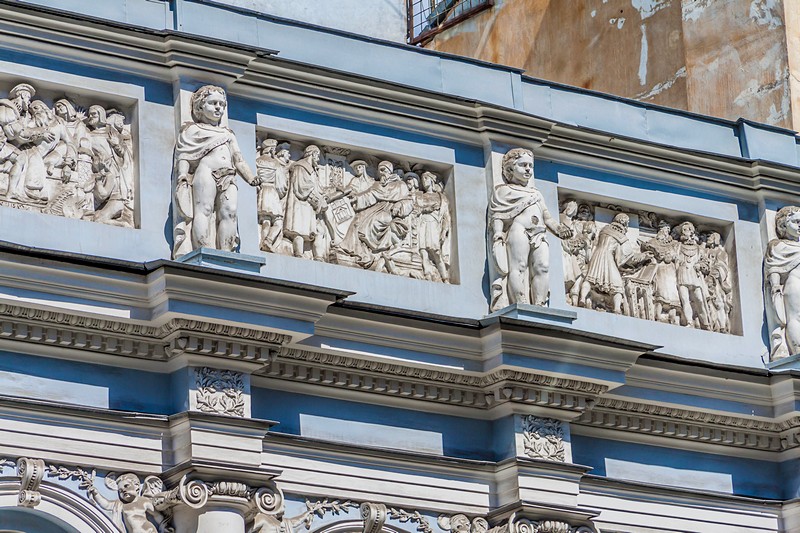
The elegant Art Nouveau mansion at No. 47 was the childhood home of the great Russian-American novelist Vladimir Nabokov. The house was bought for the family by Nabokov's maternal grandfather, Ivan Vasilevich Rukavishnikov, in 1897, two years before the writer's birth. The building was reconstructed in 1901, and full descriptions of the luxuriously fitted mansion can be found in Nabokov's memoir, Speak Memory. The Vladimir Nabokov House Museum now occupies the first two floors of the building.
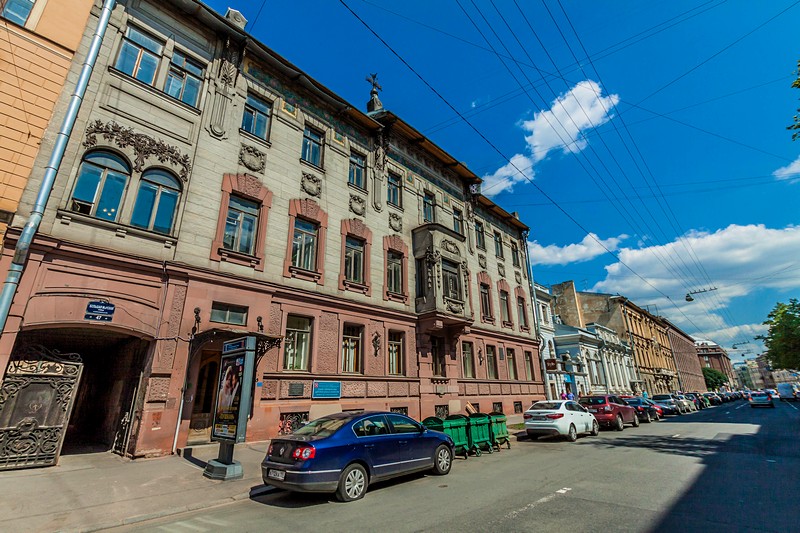
Other notable mansions on this stretch of Bolshaya Morskaya Ulitsa include the Gagarin House at No. 52, which has superb interiors by several of the greatest designers of the 19th century, including Maximilian Messmacher again. In the 1930s, it became home the Union of Architects, which helped to ensure that its magnificent state rooms have survived in very good condition. The Renaissance Revival Karamzin Mansion at No. 53 belonged to Princess Aurora Demidova-Karamzina, a society beauty who in later life became famous as a philanthropist in St. Petersburg and Helsinki.
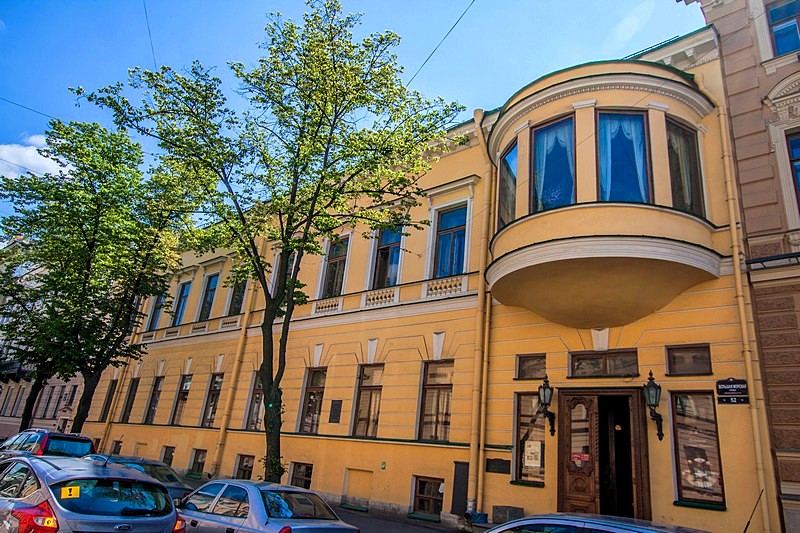
Arguably the most famous former resident of the street, however, was the renowned polymath and "father of the Russian Enlightenment", Mikhail Lomonosov. The large estate next to the Moyka River (No. 61), where he lived from 1756 until his death in 1765, was later bought by the Postal Service to serve as the central station for mail coaches in St. Petersburg, dispatching post and passengers to Moscow, Riga and Warsaw. Alberto Cavos, architect of the Mariinsky Theatre and the Bolshoy Theatre in Moscow, transformed Lomonosov's mansion into a grand Renaissance Revival structure, which housed stables, a hostel for travellers, apartments for postal workers and various administrative offices (1843-1845). With the rise of the railways, the coaching station was closed and turned into the residence of the Minister of Post and Telegraph.
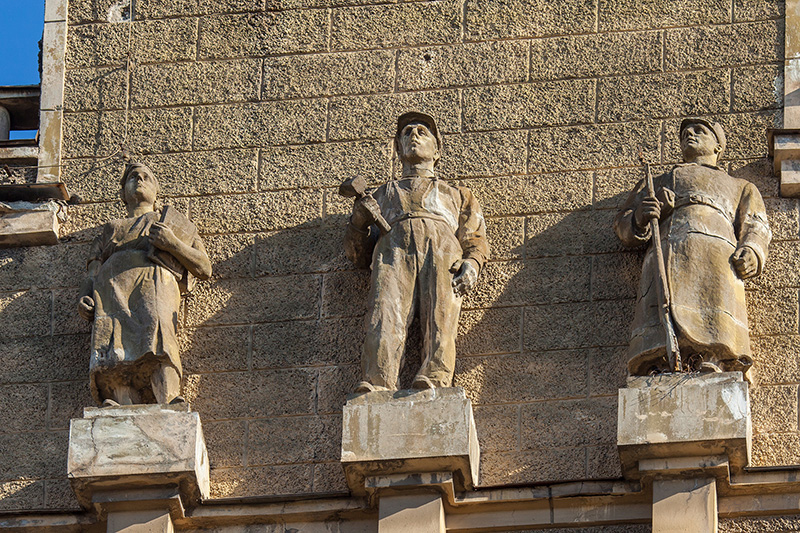
The strangest and most striking building on Bolshaya Morskaya Ulitsa is undoubtedly at No. 58, protruding over the Moyka River at the end of the street. What had once been the German Reform Church, a red-brick neo-gothic building dating from the 1870s, was transformed 1932-1939 into the Postal Workers' Palace of Culture, a late example of constructivism with splendid reliefs and statues depicting struggling workers and Red Army troops.
In Soviet times, Bolshaya Morskaya Ulitsa was renamed Ulitsa Herzena in honor of the 19th century progressive Russian writer and essayist Alexander Herzen who lived for a year at the corner of Gorokhovaya Ulitsa (No. 25), but its historical name was restored in 1993. Today, Bolshaya Morskaya Ulitsa remains one of the main arteries through the historic centre, and one of St. Petersburg's most beautiful streets.
| Metro stations: | Admiralteyskaya |
|---|---|
| Directions: | Exit Admiralteyskaya Metro Station and turn right until you reach the first intersection. |
| Best walking route: | The whole street (about 1 hour) |
| What's here? | General Staff Headquarters, Nabokov House, House of Faberge, Ministry of State Property, Countess Razumovskaya Mansion, German Embassy, Russian Industrial and Commercial Bank, Central Telephone Station, Hotel Astoria, Chicherin House, Demidov Mansion, Azov-Don Bank Building, House of Architects (Polovtsov Mansion), House of Composers, Postal Workers' Palace of Culture |
| What's nearby? | Palace Square, Nevsky Prospekt, Gorokhovaya Ulitsa (Pea Street), Voznesensky Prospekt, Moyka River, Novaya Gollandia (New Holland), St. Isaac's Cathedral, Isakievsky Ploshchad (St. Isaac's Square), Kryukov Canal |

